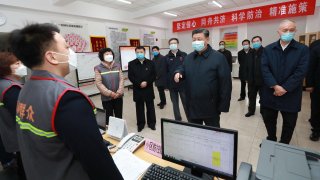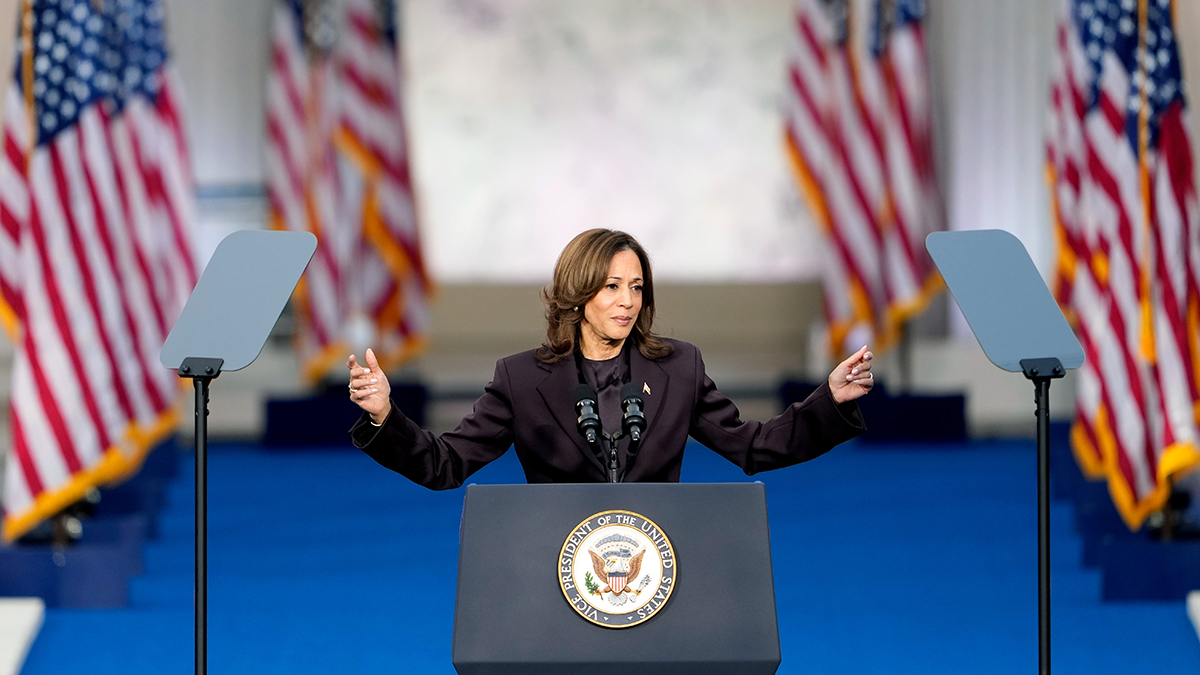
What to Know
- The coronavirus that emerged from China’s Hubei province over a month ago and has spread to two dozen countries is already fueling mistrust from the U.S. government on whether China can provide accurate information
- U.S. mistrust of China goes as far back as the 1950s, when national authorities set unrealistic production quotas that led local officials to inflate data
The coronavirus that emerged from China’s Hubei province over a month ago and has spread to two dozen countries is already fueling mistrust from the U.S. government on whether China can provide accurate information about the epidemic.
The White House said this week it does “not have high confidence in the information coming out of China” regarding the count of coronavirus cases, a senior administration official told CNBC. Meanwhile, China has reportedly been reluctant to accept help from the Centers for Disease Control and Prevention, and has reportedly suppressed information about the outbreak from scientists that it deems alarming.
U.S. officials’ mistrust of China goes as far back as the 1950s, when national authorities set unrealistic production quotas that led local officials to inflate data. Mishaps with the 2003 outbreak of SARS, which sickened 8,098 people and killed about 800 over nine months, and discrepancies in reporting of economic data over the past two decades has only hardened the U.S. government’s belief that China cannot be trusted, experts say. White House advisor Peter Navarro has even called China a “disease incubator.”
Since emerging from the city of Wuhan, the new virus has spread from about 300 people as of mid-January to more than 64,000 as of Friday — with the number of new cases growing by the thousands every day. World health officials say China’s response to the virus is an improvement from past outbreaks. China has been more transparent, World Health Organization officials told reporters this week. Chinese health authorities quickly isolated the virus’ genetic sequence and shared it on a public database in a matter of weeks, they said, giving scientists a chance to identify it.
A WHO-led team of 12 international experts are expected to arrive in China this weekend to collaborate with Chinese counterparts, WHO Director-General Tedros Adhanom Ghebreyesus said Friday. But praise from the WHO has not kept top U.S. officials from criticizing China’s handling of the outbreak. On Thursday, White House top economic advisor Larry Kudlow told reporters the U.S. is “quite disappointed,” citing a lack of transparency. Such criticism is far from new.
The SARS outbreak
U.S. & World
The day's top national and international news.
Skepticism over China’s handling of public health crises dates back to 2003, according to Yanzhong Huang, a public health researcher at the Council on Foreign Relations and director of the Center for Global Health Studies at Seton Hall University.
At the time, the Chinese government was accused of trying to cover up the outbreak of Severe Acute Respiratory Syndrome, more commonly known as SARS, which rapidly spread to more than two dozen countries and caused world health officials to declare it a global health threat.
The flu-like virus, which produced symptoms such as fever, cough, chills and fatigue, had never been seen before, and poor management and delays from the government was blamed by world leaders for the rapid spread of the disease, Huang said.
The earliest case of the coronavirus is thought to have emerged in November 2002. Chinese health authorities were alerted to the mysterious respiratory disease that mid-December, but it would take several more months before the disclosure of the illness to the public.
Health officials reported on Feb. 11, 2003, more than 300 cases of SARS in the province of Guangdong, where the outbreak began. The officials also admitted that there were no effective drugs to treat the disease and that the outbreak was only tentatively contained, said Huang.
China’s leadership later took proactive steps, including working with WHO and other officials to contain the outbreak, Huang said. But the initial failure to inform the public heightened anxieties, fear, and widespread speculation, including in the U.S., and spurred an ousting of top health officials, he added.
“There are certainly similarities” to the SARS response and the new virus, said Huang, adding that China’s response has been much better this time.
Currency manipulation
When the Trump administration officially designated China a currency manipulator in August last year, it drew bipartisan support from American politicians.
“China has been manipulating their currency long before and since President Trump took office,” Senate Democratic Leader Chuck Schumer said at the time. “He should finally tell his Treasury Secretary to label China a currency manipulator. That’s all he needs to do to make it happen.”
There’s little evidence to support the notion that China has manipulated its currency in recent years, David Dollar, senior fellow at the John L. Thornton China Center at the Brookings Institution who specializes in China’s economic system, said. However, the support for such a move underscores U.S. officials’ frustrations with and skepticism towards China’s historical economic data, Dollar said.
“Back around 2005, 2006, it would be fair to say that China was intervening to keep the currency low,” he said. “Historically, they would have met the definition of currency manipulator 15 years ago.”
The U.S. briefly labeled China a currency manipulator before removing them from the list last month as the two countries prepared to sign a phase-one trade deal. Nonetheless, Dollar said it’s clear that China historically suppressed the rise of its currency to maintain a trade advantage with the U.S. and other countries. This history, Dollar said, as well as other disputes related to trade has been a point of contention and distrust between the U.S. and China.
GDP data that’s “no good”
When it comes to internal economic measures, even Chinese officials struggle to trust the data. Chinese Premier Li Keqiang in 2007 called provincial GDP data “man-made.” Those comments, which were made in private to U.S. diplomatic personnel and later leaked, gave rise to what’s now called the Li Keqiang index.
The index is a figure used by economists to examine the underlying factors of China’s economy, such as electricity consumption, rail cargo and amount of loans disbursed. Keqiang told U.S. officials these figures were more accurate than the provincial GDP data provided by local officials under pressure to inflate their numbers.
Thomas Rawski, professor of economics and history at the University of Pittsburgh whose research is focused on the development of China’s modern economy, said it’s widely understood by economists and Chinese officials alike that provincial data is “no good.”
“When things aren’t going well, and we see this on both a national and provincial level, they publish data that show things are better than they are,” he said. “Assuming the best possible effort, it’s just not easy to measure such a large economy. On top of that, there are also questions about whether there is an interest at all in actually reporting accurate numbers.”
Rawski has observed China’s economic growth since before the Asian financial crisis around 1997, which is when he began to see the data run away from reality, he said. He published an article in 2001 that claimed data on manufacturing output was out of step with underlying figures on electricity consumption.
“Thinking about the flu business, it is entirely the same as the GDP issues,” he said. “In both cases, there are a lot of technical issues as well as what I call veracity issues. And there’s the question of motivation of people collecting and reporting the data at all levels, and you have to ask is there an incentive to distort. I think the answer is obviously yes.”
WHO defends China
Despite the past issues between the U.S. and China, world health officials are urging leaders to mount a coordinated response to the new outbreak.
WHO officials on Friday defended China after the Trump administration claimed the country wasn’t being transparent about the outbreak.
“This is a very obviously tense political environment because of the economic issues and because of everything else,” Dr. Mike Ryan, executive director of the World Health Organization’s emergencies program, said at a news conference at the agency’s headquarters in Geneva. “Please, let our scientists get on. Let our public health professionals get on. Let them work together.”
Officials are also asking the public to remain calm, not recommending “measures that unnecessarily interfere with international trade or travel.” They say China is doing everything they can to contain the outbreak.
“This is the time for facts, not fear. This is the time for science, not rumors. This is the time for solidarity, not stigma,” Tedros said last month when declaring the virus a global health emergency.
This story first appeared on CNBC.com. More from CNBC:



